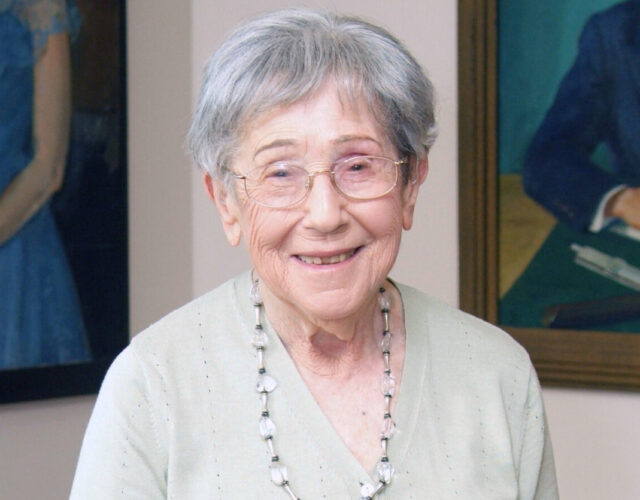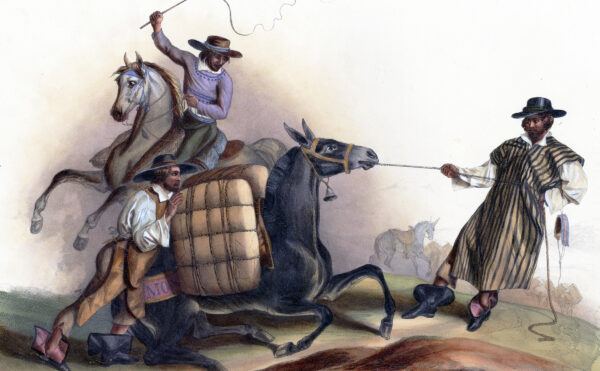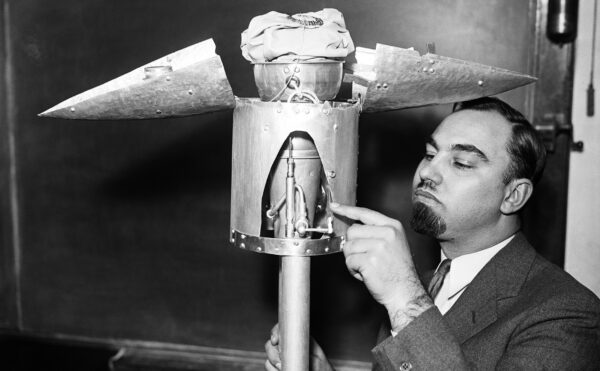Mildred Cohn, young and headstrong, did not like to be told “no.” By fighting against prejudice that held back women and Jews in science she accomplished what few women at the time could: a successful career in chemistry.
Born in 1913 to Russian Jewish immigrant parents, Cohn grew up in New York City. She skipped several grades and graduated from high school at 14—despite the high school dean telling Cohn she was too young. She attended Hunter College, whose students were all women at the time, and pursued a degree in chemistry. Cohn later disregarded the advice of a professor and went on to a master’s degree, and, eventually, a PhD in chemistry. Though often the first and only woman in her workplaces, Cohn persevered and became a respected name in chemistry—helping to cut a path for other determined women.
Despite completing her master’s degree at Columbia University in one year, she couldn’t immediately continue on to a PhD because teaching assistantships were not offered to women. “There was support for graduate students . . . But they were not available to women students because the assistantships were all in Columbia College and Columbia College was an all-male school,” Cohn told her CHF oral history interviewer, Leon Gortler, in 1987. “They told me that they had had bad experiences with women in World War I—that was even before my time—and they would not have a woman as a teacher in anything but graduate courses. Of course, as a first-year student I couldn’t be a teaching assistant of a graduate course.”
Returning to Columbia several years later, after saving money by working with NASA’s forerunner, the National Advisory Committee for Aeronautics, Cohn earned her PhD while studying with Nobel laureate Harold Urey. Her research focused on tracing the movement of carbon atoms within a cell. During this time she learned the practical skills of glass blowing necessary to her experiments with vacuum systems and also met her husband to be, physicist Henry Primakoff.
The chemist and the physicist married in 1938, and several years later moved to St. Louis where Primakoff was offered a position at Washington University. Cohn landed a job with Carl and Gerty Cori, a husband-and-wife research team at the same university, and worked on research that led to advances in determining the structure of adenosine triphosphate (ATP).
Only in 1960, 20 years after earning her PhD, did Cohn land her first tenure-track position: as an associate professor of biophysics and physical biochemistry at the University of Pennsylvania School of Medicine. The following year she became a full professor. In 1964 the American Heart Association selected Cohn as its first woman career investigator, a position she held for the next 14 years. A Philadelphia Inquirer article about her in 1964 emphasized both the discrimination and expectations that women in science faced with a headline that read: “Woman researcher adds new career to homemaking.”
Cohn’s contributions to science included work that led to the development of magnetic resonance imaging, or MRI, and developing, with others, techniques and instruments allowing the study of protein behavior in the body. Her firsts helped open doors to other women. She was the first woman appointed to the editorial board of The Journal of Biological Chemistry and the first to become president of the American Society for Biochemistry and Molecular Biology. Her portrait hangs at the University of Pennsylvania’s medical school. Cohn’s daughter, Laura Primakoff, told an Inquirer reporter that Cohn purposely wore a pastel-colored dress in her photograph, so that she would stand out next to all the men in dark suits.She retired in 1985 but remained active at Penn until just a few months before her death on 12 October 2009, at the age of 96. The National Women’s Hall of Fame inducted her the following day. A friend of CHF (and a Chemical Heritage contributor), Cohn’s legacy will surely live on.




